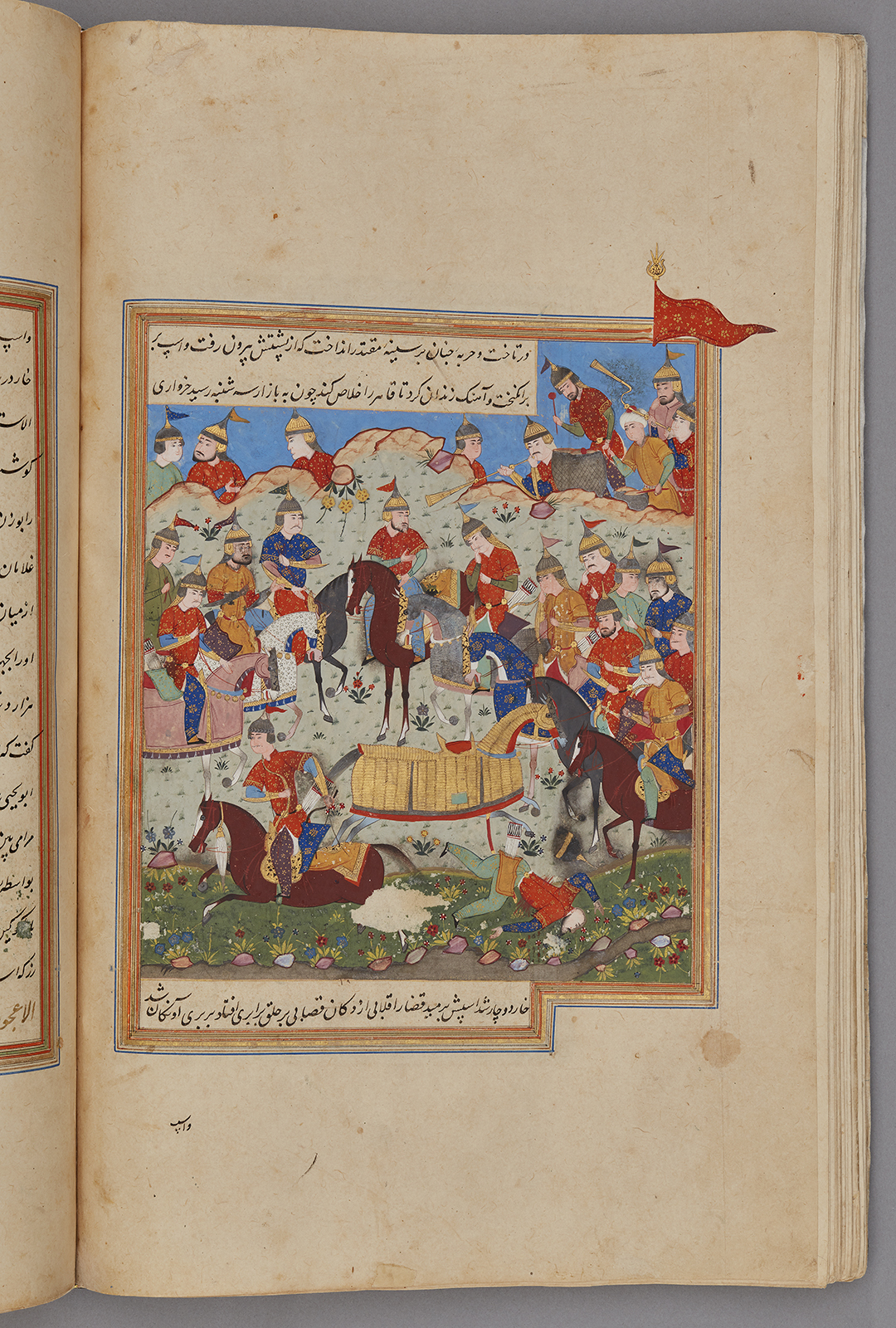Click on the image to zoom
Revenge on Caliph Muqtadir, Folio from a manuscript of Nigaristan
- Accession Number:AKM272.f69v
- Creator:Author: Ahmad b. Muhammad Ghaffari, Persian, died 1567 Scribe: Ahmad al-Shirazi
- Place:Iran, Shiraz (probably)
- Dimensions:38.7 cm × 25 cm × 6.4 cm
- Date:1573-74 CE/980 AH/AH 980
- Materials and Technique:Ink, opaque watercolour, and gold on paper
The miniature painting "Revenge on Caliph Muqtadir" is from an intact manuscript of Kitab-i Nigaristan, a collection of anecdotes and historical incidents written in prose by the historian and scholar Ahmad Muhammad Ghaffari (1504–1567/68) of Kashan in 1551–2. This illustrated manuscript, dated 1573, was probably produced in a Shiraz workshop.
See AKM272 for more information about the manuscript and links to the other illustrations.
Further Reading
The miniature painting is divided into three parts. The main scene is a deadly encounter taking place in the lower part of the painting. There, a rider in the foreground has pulled the arrow out of its quiver. Near his back is another horse whose rider has fallen to the ground. The largest group of the figures occupies the middle segment of the painting. Both this group and the figures behind the horizon act as spectators of the conflict.
The illustration tells the story of Tabrizi’s ill-fated attempt to exact revenge against the Abbasid Caliph Muqtadir (r. 908–29) for imprisoning his brother, accused of plotting to depose the Caliph. The act of vengeance ends badly for Tabrizi.
"Revenge on Caliph Muqtadir" features a setting typical of Persian miniature painting, particularly during the Timurid period (1370–1507). Troops face each other and are set on the left and right hand side of the image, identified by their battle standards. The main battle—in which Muqtadir kills Tabrizi—takes place in the lower middle segment of the image.
Figures behind the hill also serve as spectators, who watch the deadly encounter. The inclusion of multiple figures in this scene reflects the artist’s decision to create a particularly rich and lavish effect.
- Elika Palenzona-Djalili
References
Bosworth, Clifford Edmund. The Islamic Dynasties. A chronological and genealogical handbook. Edinburgh: Ediburgh University Press, 1980. ISBN: 9780748696482
Robinson, Chase F., ed. The New Cambridge History of Islam, Volume 1: The Formation of the Islamic World, Sixth to Eleventh Centuries. Cambridge: Cambridge University Press, 305–59. ISBN: 9781139055932
Note: This online resource is reviewed and updated on an ongoing basis. We are committed to improving this information and will revise and update knowledge about this object as it becomes available.


